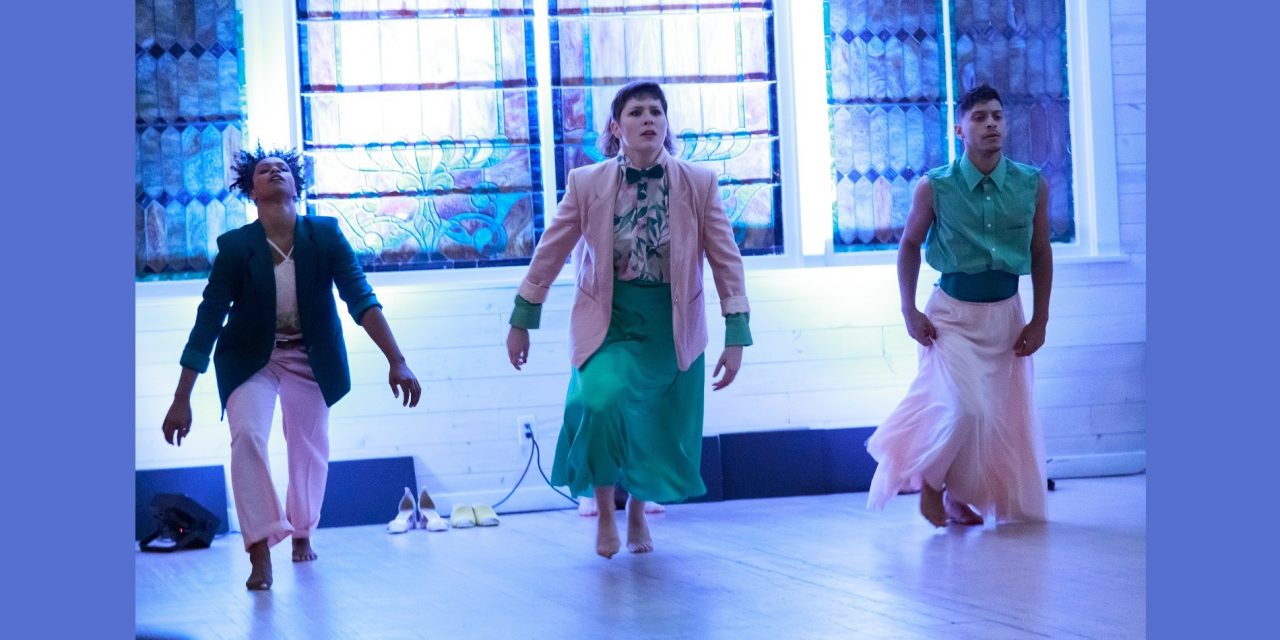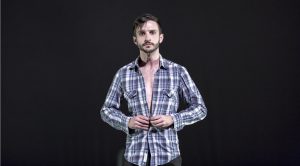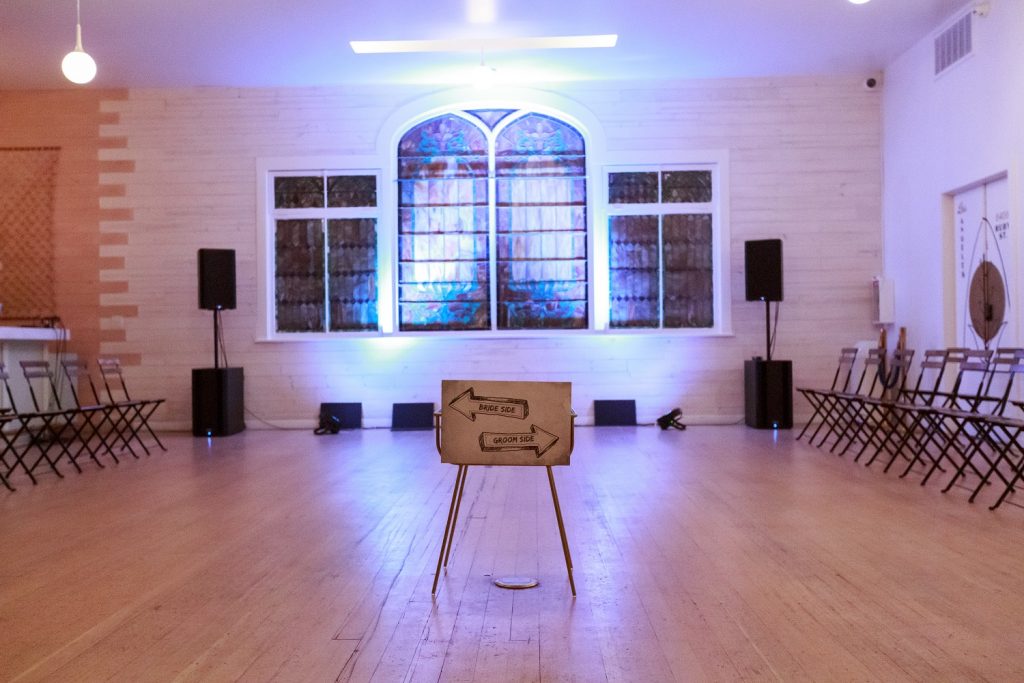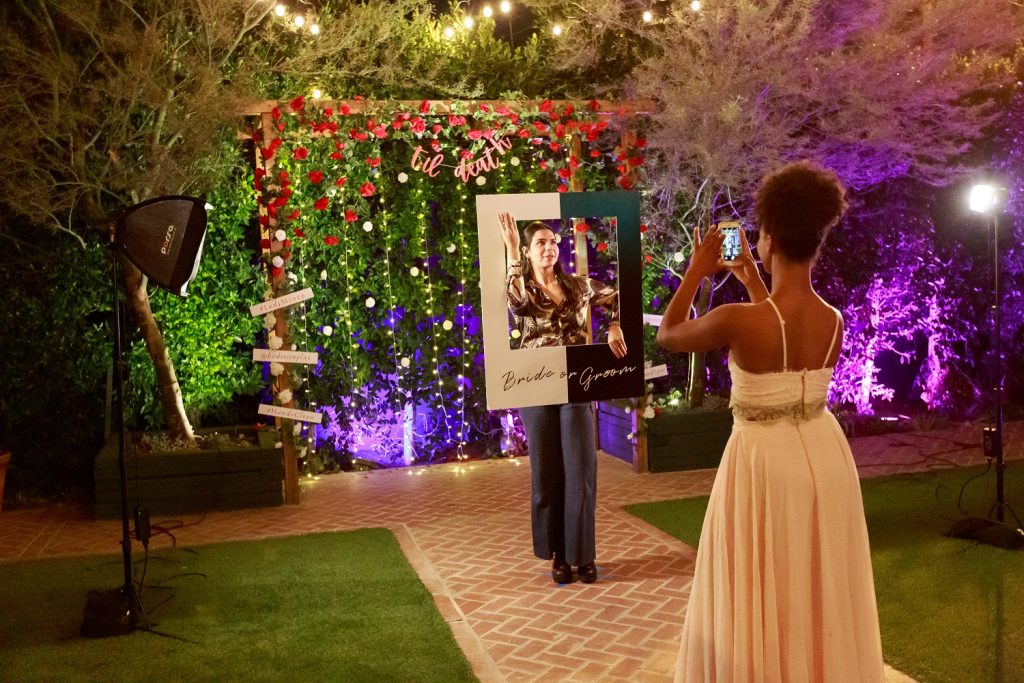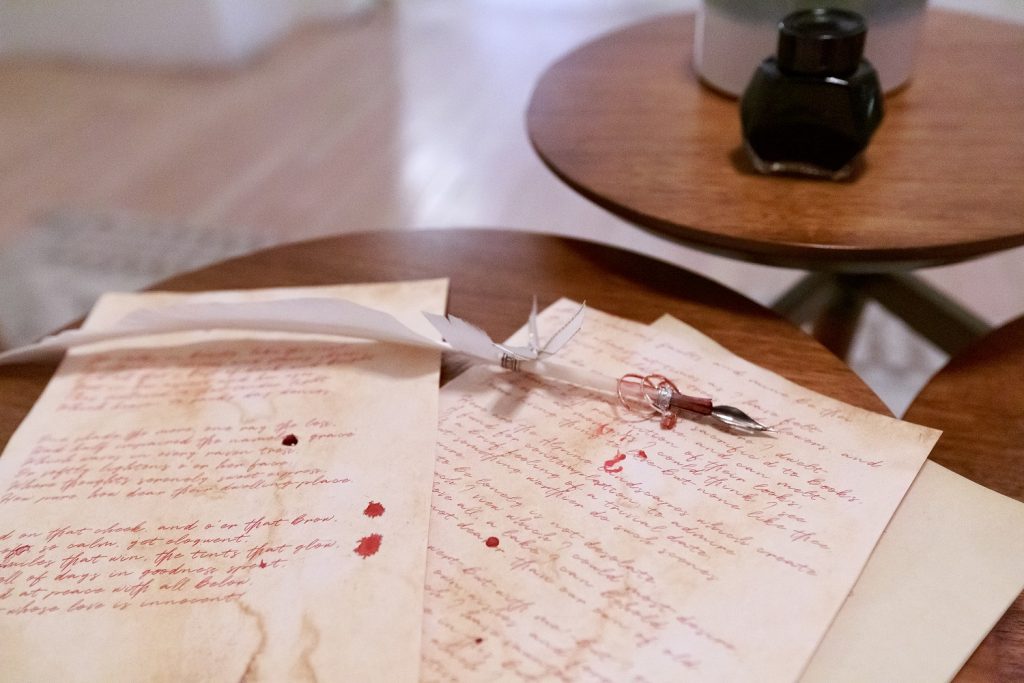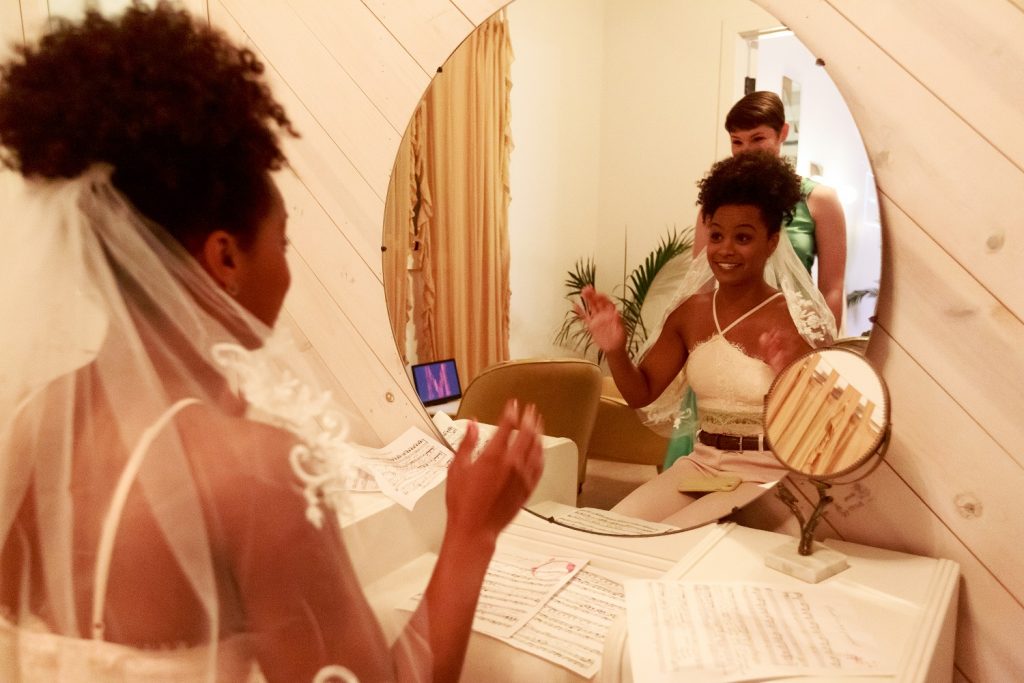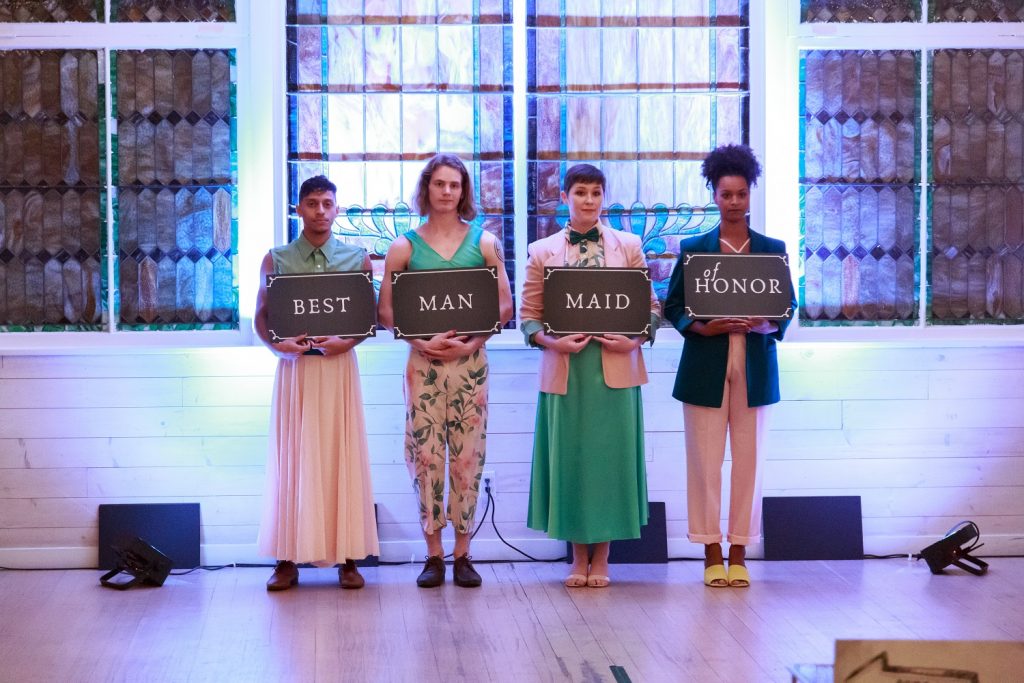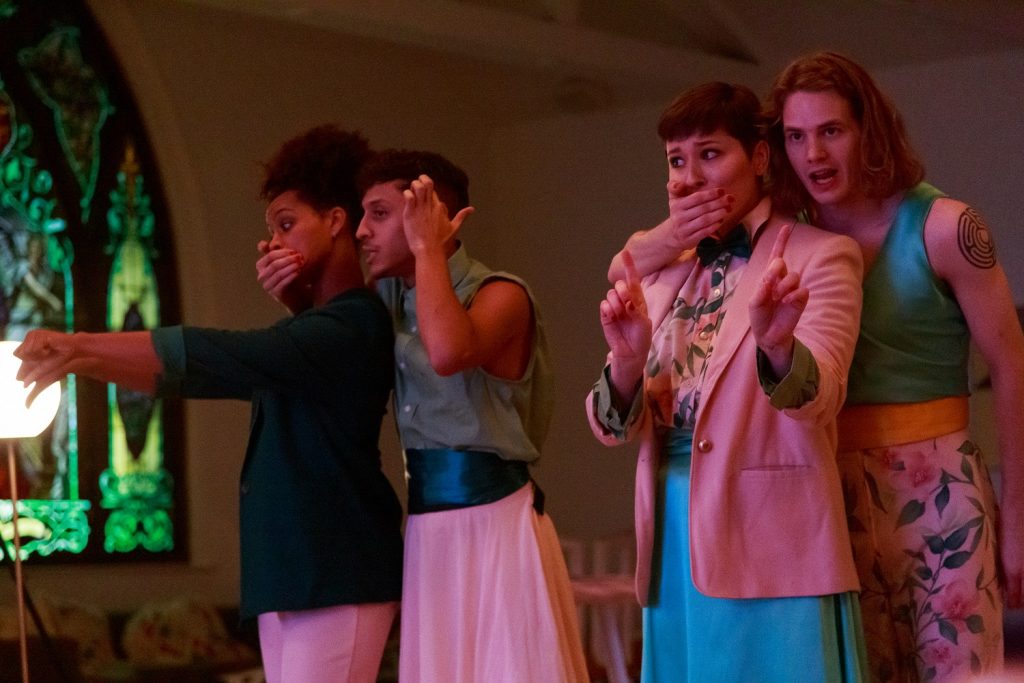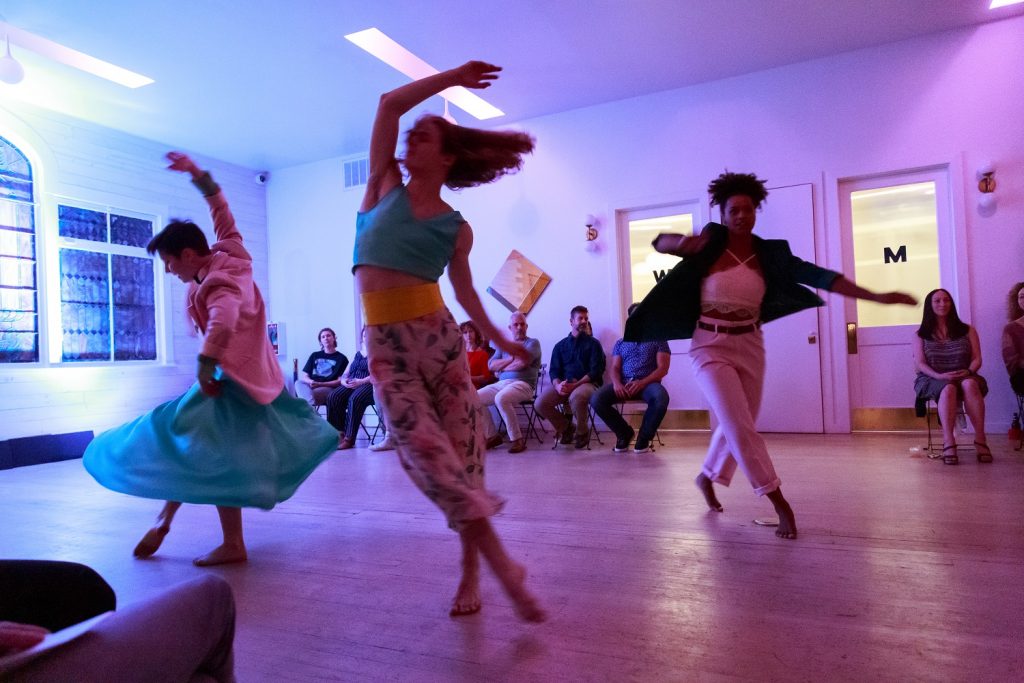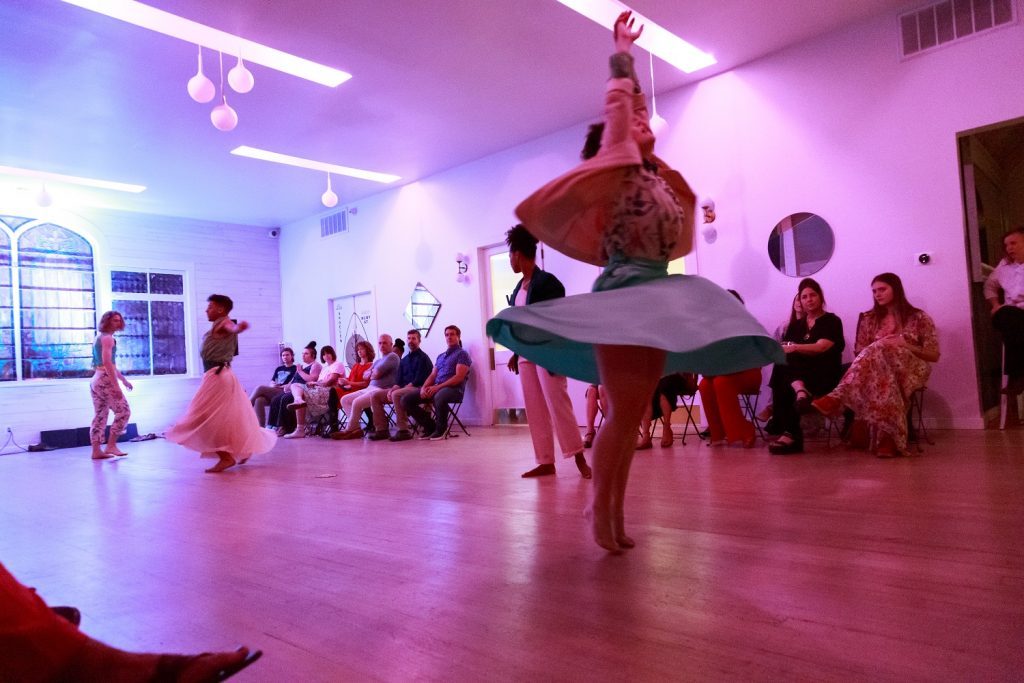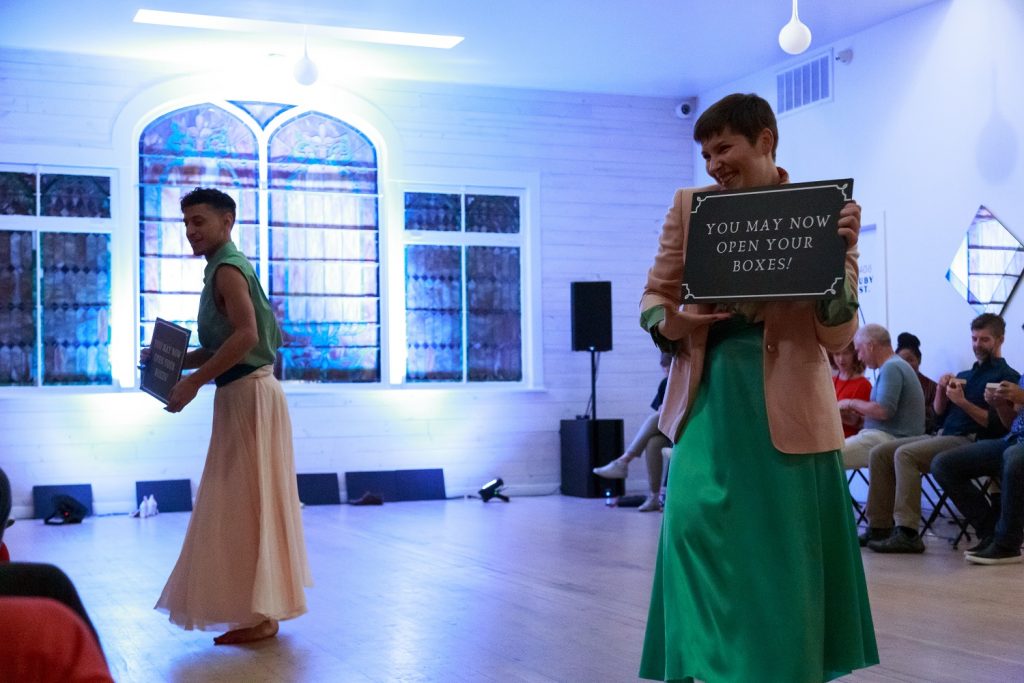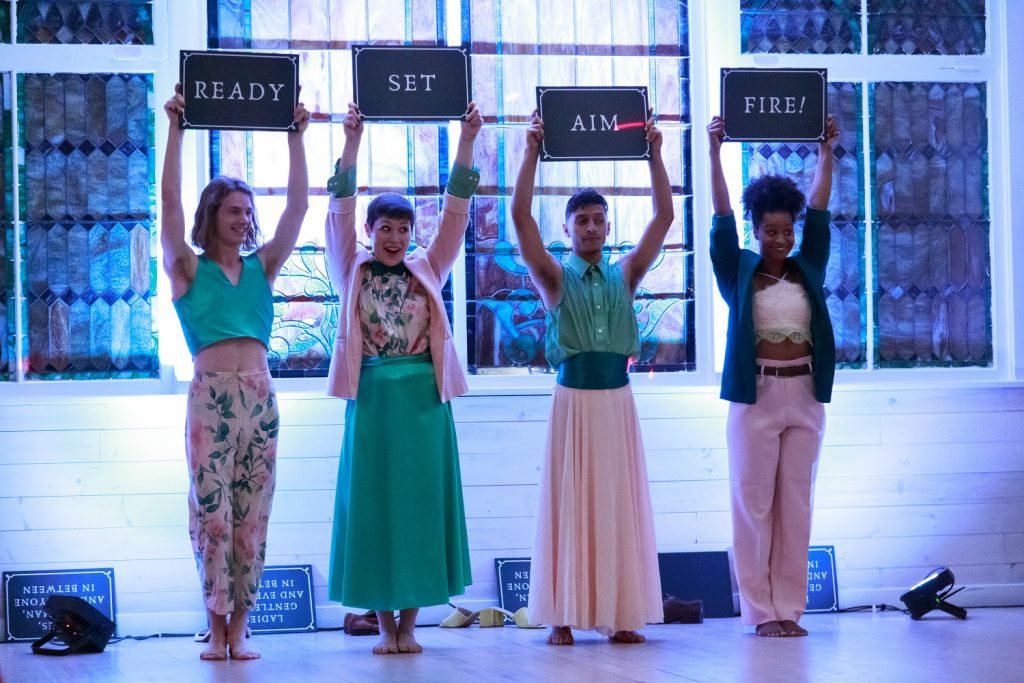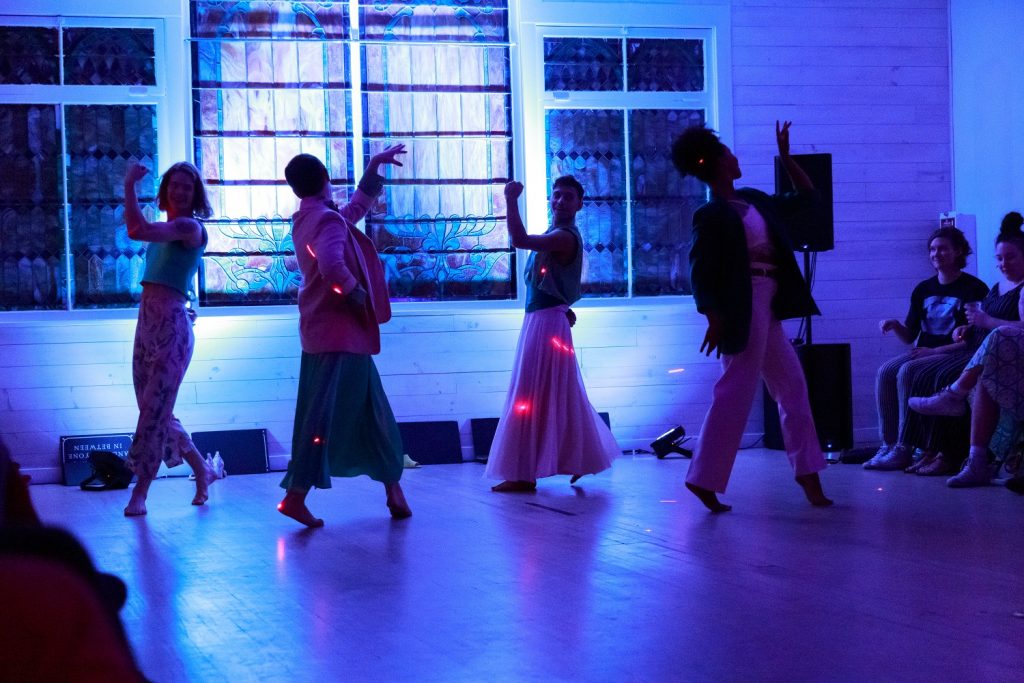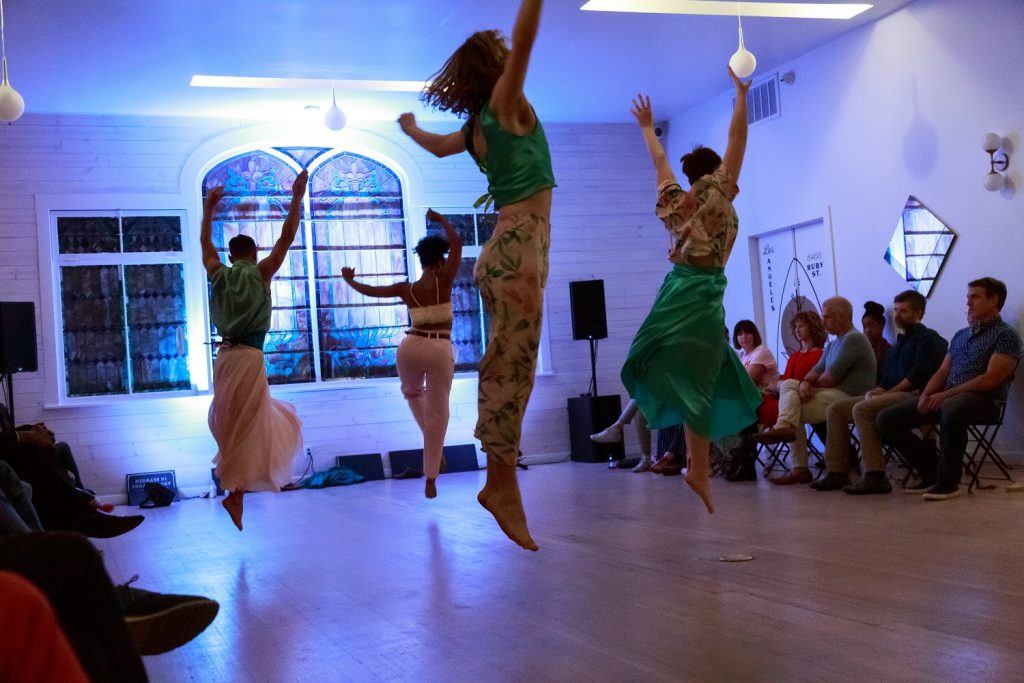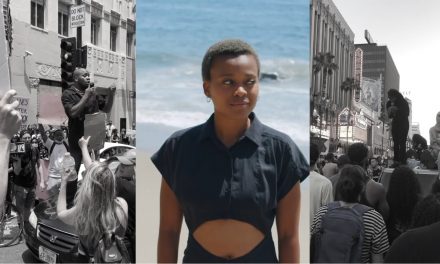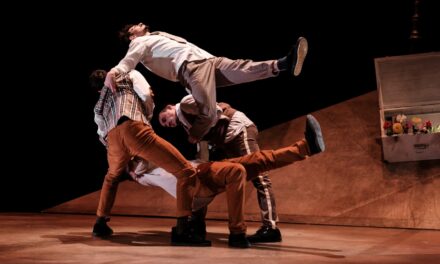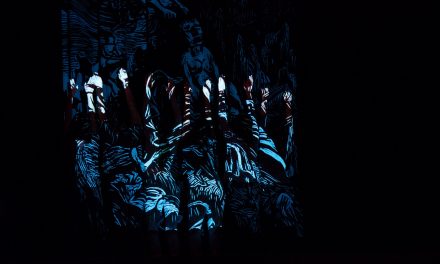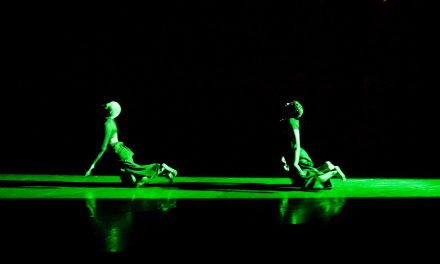Upon entering The Ruby Street on Thursday night, I knew Andrew Pearson’s cast would be taking a crack at gender constructs through the lens of a staged marriage. What I wasn’t ready for? The cast’s complete and unwavering commitment.
Pearson greeted me on the way in, letting me know that the bride and groom would be out shortly. Dancers—or should I say, members of the bridal party—Jacob Byrd and Sadie Yarrington coaxed me into taking a picture at the photo station with an oversized Polaroid frame. Daurin Tavares offered a tour of the bride and groom’s suites (empty and littered with sheet music and parchment poetry), and Darby Epperson courted guests left and right, twirling in a stunning seafoam gown.
Styling by Megan Jean Feely gave each member of the cast a unique look, all the while pulling them together in blush lace and seafoam satin, marked by emerald accents (cummerbunds and the like). Midway through cocktail hour, the cast dispersed whispers of “the bride and groom need our help,” and fluttered off to the bridal suites to return having swapped pieces of their costumes. Masculine-presenting dancers now twirled in skirts and satin crop tops, femmes having taken their blazers—the first spark of subversion. Had Feely seen the venue beforehand, she matched its colors with finesse; had she not, it was a lucky stroke of kismet.
Michael Dunn at Chuck’s Kitchen circulated a tray of “marital meatloaf,” not far from the open bar (cocktails sponsored by The Offbeat Bar). Each guest was given a small box, wrapped in either pink or blue ribbon, and asked whether attending for the bride or groom. A soundtrack of acoustic pop covers floated over The Ruby Street, a stunning suffragette-house-turned-event-space in Highland Park. Pearson’s attention to detail was flawless—this fake wedding world proved believable, whimsical, and worthy of just a little cringe. And just like that, guests were ushered into their seats for the ceremony, at which the bride and groom would never appear.
The dancers began in a line, swapping cards that each said “best,” “man,” “maid,” and “of honor.” A haunting overture then accompanied their sudden switch to a very Lady Macbeth out, damned spot scene, each dancer rubbing imaginary spots from their hands. This alternated in and out of theatrical voiceover for what seemed the entire piece—themes of the voiceover ranged from wedding gossip heard from a “Lady Melbourne” to meatloaf recipe tutorials from Chuck’s Kitchen. If not all, at least one dancer was always mouthing the voiceover, earnestly acting their way through the dialogue. Though the score was a coherent synthesis of Pearson’s inspirations for the piece (an article about love as a mental illness, a message on feminism from Alanis Morissette, a clip of the 2015 Macbeth film, and a comparison of Hilary Clinton to the Lady M herself), tones didn’t always quite match up.
The launch into a phrase of knee-pushing and swivel turns found me wanting more nuanced movements for such a well-researched theme. And even as dancers gave all their effort, the dialogue didn’t quite match the choreographic tone. Certain segments with determined campy/cheesy tone, set to Alanis Morissette hits (some covered by local queer artist The Hound, also known as John Lucido) translated best movement-to-music. Pearson’s floorwork phrases gave dancers impetus to ground themselves into the movement, especially as the evening progressed, and they found their place in the blend of theatre and dance a bit more. Pulling these tasks from so many mediums was asking a ton of the artists, and Pearson seemed to know that, his manifesto of “bodies in play” etched all over the multidimensional composition. But the dancers rose to the challenge with the agency and curiosity that he bestowed them, actively taking up the entire space and not once letting my attention wander.
A series of wedding toasts with slightly muddled messages to the effect of “we’re all different, marriage doesn’t fit everyone,” finished out the evening. The darker tones of the evening resolved with a “whatever works for you,” a surprisingly light message from a night inspired by one of Shakespeare’s bloodiest. Even if not polished and perfect, “The Ballad of Lady M” demonstrated such a willing creativity, a challenge of norms and a bit of food for thought. In the spirit of the budding Los Angeles dance scene, it made its mark with a new twist and indulged not in ego. Pearson simply presented his findings from a fountain of research—much appreciated among the excess of large and demanding personalities dance sees today.
Despite wanting for transitions, Pearson and his beautifully androgynous cast made their point in a playful and innovative space. Their commitment to the work was the defining factor of success, and with Pearson’s knack for play, there’s abundant room for the movement to grow into the vision.
Written by Celine Kiner for LA Dance Chronicle, October 29, 2019.
To visit Andrew Pearson’s “bodies in play” website, click here.
For more information on The Ruby Street, click here.
Featured image: Ballard of Lady M – Choreography by Andrew Person – Photo: Brian Hashimoto

